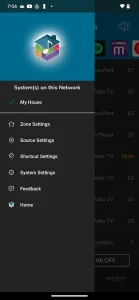Alexa Mode Integration into HTD Audio Systems
Industry
Entertainment
Technologies
iOS, Android
Customer
The primary focus of this US company revolves around manufacturing and retailing premium speakers and electronic devices designed for home theater systems. Leveraging their extensive expertise, the company has cemented its position over time as a prominent supplier of cutting-edge audio solutions catering to diverse customer needs.
Challenge
The customer approached us with an outdated mobile application responsible for managing home audio systems. The application was full of bugs (more than 200) and restricted functionality, leading to usability issues. We reanimated the application by augmenting it with vital features and guaranteeing stability for effortless operation. The next project challenge was implementing Alexa mode.
Cooperation
To expand the app’s flexibility, we undertook a comprehensive redesign of the architecture to seamlessly integrate Alexa mode. This required substantial work in revamping the interface and enhancing compatibility with the voice-activated features of Alexa.
Our goal was to integrate Alexa into the HTD (Home Theater Direct) audio system through the network layer. Since Alexa doesn’t have a built-in control system, we needed to create an intuitive solution that would allow for easy integration while maintaining user-friendly functionality. To accomplish this, we used our mobile application that served as a crucial tool for connecting Alexa to the audio system.
The process involved users registering Alexa in the cloud, then utilizing our application to facilitate communication between Alexa and the HTD audio system. Through the cloud, Alexa could interact with our application; our application could interact with Alexa, and both Alexa and our app could communicate with the audio system, exchanging commands. This resulted in a comprehensive ecosystem that successfully integrated the Alexa device into the HTD audio system.
During the development process, our team faced a number of technical challenges. Within the firmware of the audio system made by a Chinese manufacturer, everything worked in one direction: the gateway through which communication was made with the audio system and network; it could work either as a server or as a receiver. The problem was that our application worked with the system as a receiver, but Alexa worked with the system as a server.
It was possible therefore to use either Alexa or our application. However building a cohesive ecosystem proved to be difficult. We explored various options and realized that we needed to adapt our system to work with Alexa. After engaging in lengthy and challenging communications with the Chinese manufacturer, we successfully convinced them to make firmware changes to the gateway. This allowed the gateway to function as a duplex channel, enabling it to both send and receive data, effectively acting as both a server and a receiver. As a result, our application started operating on one channel while Alexa operated on another. This modification ensured that all components of the system could recognize each other and remain connected online.




The screens of the HTD home audio app dveloped by Enginerasoft team
Results
Through extensive redesign and collaboration with the Chinese manufacturer, we successfully integrated Alexa into the HTD audio system. By leveraging a mobile application and the cloud, we created a comprehensive ecosystem that allowed for seamless communication between Alexa, our application, and the audio system. Overcoming technical challenges and adapting the system to work with both Alexa and our application was crucial in achieving this integration.
We did a great job, and the customer was fully satisfied with the developed solution.